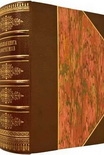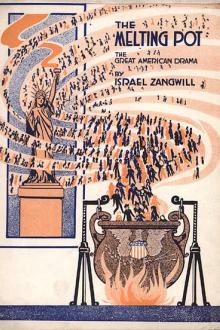No Modernism Without Lesbians, Diana Souhami [love books to read txt] 📗

- Author: Diana Souhami
Book online «No Modernism Without Lesbians, Diana Souhami [love books to read txt] 📗». Author Diana Souhami
Romaine called this memoir No Pleasant Memories. From the age of six, her escape was to draw. As she, her mother and brother moved from one country and hotel to another, she would find a quiet corner, get out her pad and pencils and draw the view from the window and childhood images of home: houses, trees, cats, flowers.
From an early age, her interests defined as art, music and girls. She was sent to a convent, then to Mademoiselle Bertin’s finishing school in Geneva, to be taught how to manage the servants. She ran away to Paris, studied singing and French, and held hands with and kissed the English contralto Clara Butt.8 ‘My life was transformed’, Romaine wrote of Clara. ‘I now lived on a higher plane of love and adoration. My new friend radiated kindness and sympathy.’
In Rome, Romaine studied art then went to Capri to paint, and while there made an impulsive and extremely brief marriage to John Ellingham Brooks, who was homosexual and wanted her money. She moved to England, took a studio in Tite Street in London, worked with the Newlyn School of artists in Cornwall, then returned to Paris. In 1906, she too had an affair with Renée Vivien:
I found myself drifting along with her… If ghosts were wont to visit and haunt me, she, pale life, visited and haunted death.
Renée told her La Brioche, the Baroness van Zuylen, was jealous.
I willingly believed her and made it the pretext to end our friendship. But she had taken this indirect way hoping to attach me still further. Someone came to intercede for her. I would not go back… a few months afterwards I heard she was dead.
Winnaretta Singer
After her affair with Renée, Romaine’s ‘friendship’ was with Winnaretta Singer, the Princesse de Polignac, ten years older than Romaine, cultured, rich, and an extraordinary patron of modernist music and art. Winnaretta’s sexual appetite matched Natalie’s. Her salon was a huge contrast to Natalie’s ‘hazardous Fridays’. Her gatherings were serious and focused, though not such fun.
Winnaretta Singer © Heritage Images / Getty Images
Proust described her as ‘icy as a cold draught and with Dante’s profile’. Virginia Woolf said she was like ‘a perfectly stuffed cold fowl’. She lived in a mansion on the corner of avenue Henri-Martin and rue des Sablons (now rue Cortambert). She commissioned her portrait from Romaine, who made notes of the sitting:
the head is bent forward with profile emerging from out of a profusion of dark hair. The lowered eye escapes detection. The nose is arched and noble, but the mouth with its protruding lower lip shows strong atavistic ruthlessness ever active in self-defence.
Strong atavistic ruthlessness ever active in self-defence sounds all right for portrait painting but hard work in an intimate relationship. Romaine’s painting showed her in profile, wearing a white dress. Winnaretta was pleased. Other portrait commissions followed for Romaine, and a solo exhibition at the Galerie Durand-Ruel in rue Laffitte.
Winnaretta was the twentieth child of Isaac Singer, who made a fortune out of the sewing machine he invented and patented in 1851. In total, he fathered twenty-four children from two marriages and various affairs. Winnaretta was born in January 1865. Her mother, Isabella Eugénie Boyer, was twenty-four, half French, half English, socially ambitious and musical. Her face was said to be the model used by the sculptor Frédéric Bartholdi for the New York Statue of Liberty. Isaac Singer was fifty-three when she married him and not officially separated from his previous partner.
They lived first in The Castle, a palatial estate in 300 acres of land in Yonkers, north of New York, then when Winnaretta was six they moved to England, to Paignton in Devon, to Oldway Mansion, with 115 rooms, on a 17-acre estate. Singer died in July 1875, leaving $14 million in a much-contested will. Winnaretta was ten; her share of the fortune was about $1 million, to be invested and managed and hers when she was twenty-one.
After Singer’s death, Winnaretta’s mother took her children to Paris and remarried: Victor Reubsaet, a Dutch violinist, the son of a cobbler, who falsely claimed an inherited title. She called herself Viscomtesse d’Estenburgh, bought a large townhouse at 27 avenue Kléber in the 16th arrondissement, and in the grand salon held weekly recitals played by the finest musicians. For her fourteenth birthday present, Winnaretta chose a performance of Beethoven’s String Quartet No. 14, Opus 131. When she was seventeen, her mother took her to Bayreuth, to one of the first performances of Wagner’s Parsifal. Bayreuth was an annual event from then on.
She studied piano with the composer Émile Bourgeois and art at the atelier in rue de Bruxelles of Félix Barrias, who included Edgar Degas among his pupils. Winnaretta said the works of Degas, Monet, Sisley, Boudin and Manet ‘threw a fresh light and meaning on all that surrounded me in the visual world’. But home life was intolerable. Her mother criticized her appearance; her stepfather sexually abused her, spent much of her mother’s fortune and tried to acquire Winnaretta’s too. The papers wrote of a feud of ‘gigantic proportions’:
The quarrel has reached such a pitch that Miss Singer has left her home and has gone to board at a convent. Lawyers have been engaged, members of the damsel’s family have been summoned and while the cause of the dissension continues to be a mystery to the world at large, the noise of the conflict has become distinctly discernible.
The rumour was that her stepfather had raped her. She left Paris, stayed with friends and when she was twenty-one had her money transferred into a Rothschild bank, out of his reach. She bought the lavish property on the corner of avenue Henri-Martin and to deter suitors and deflect from being lesbian married Prince Louis-Vilfred de Scey-Montbéliard. He was twenty-nine. She was careful enough before





Comments (0)